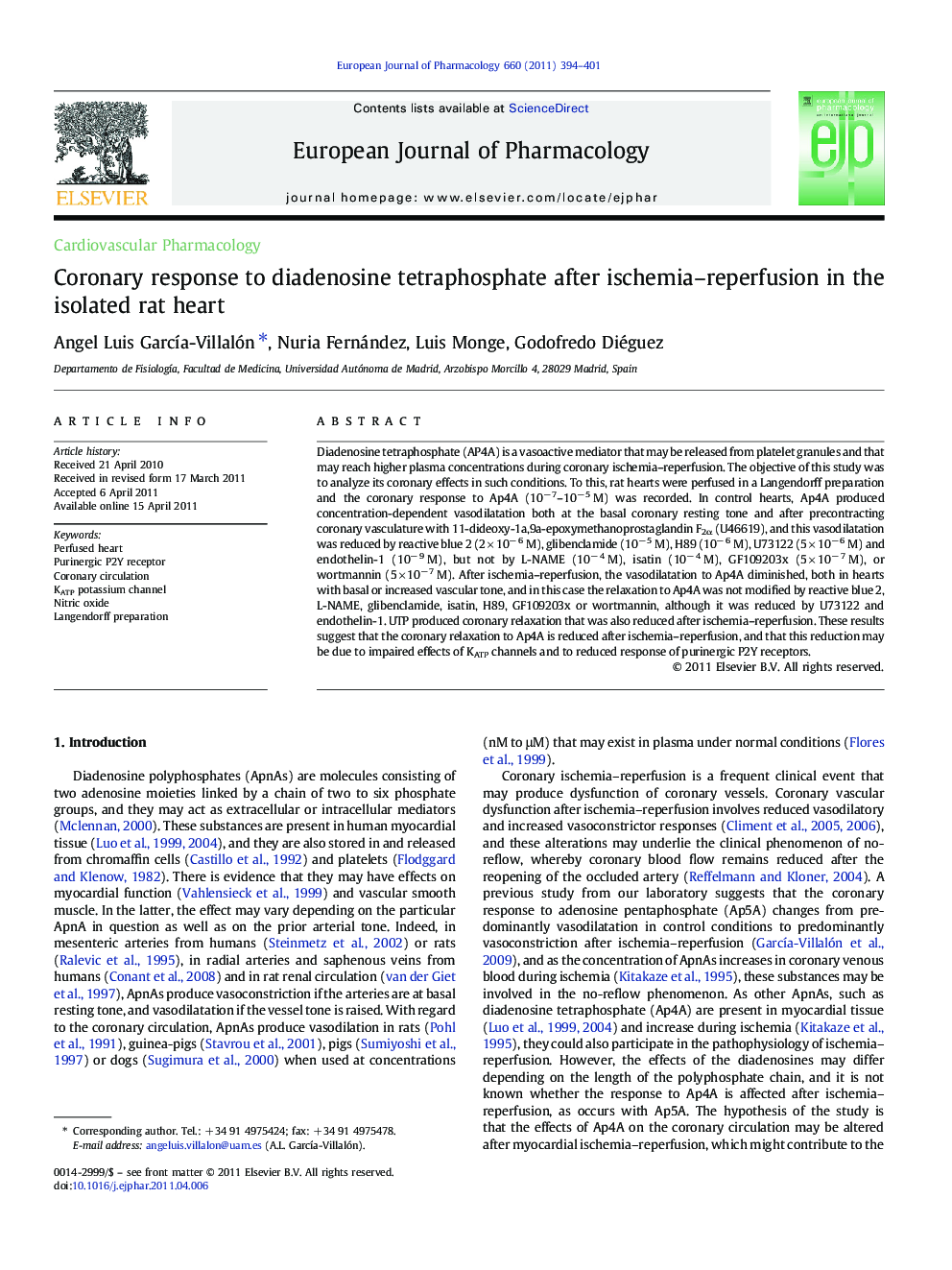| Article ID | Journal | Published Year | Pages | File Type |
|---|---|---|---|---|
| 5830335 | European Journal of Pharmacology | 2011 | 8 Pages |
Abstract
Diadenosine tetraphosphate (AP4A) is a vasoactive mediator that may be released from platelet granules and that may reach higher plasma concentrations during coronary ischemia-reperfusion. The objective of this study was to analyze its coronary effects in such conditions. To this, rat hearts were perfused in a Langendorff preparation and the coronary response to Ap4A (10â 7-10â 5 M) was recorded. In control hearts, Ap4A produced concentration-dependent vasodilatation both at the basal coronary resting tone and after precontracting coronary vasculature with 11-dideoxy-1a,9a-epoxymethanoprostaglandin F2α (U46619), and this vasodilatation was reduced by reactive blue 2 (2 Ã 10â 6 M), glibenclamide (10â 5 M), H89 (10â 6 M), U73122 (5 Ã 10â 6 M) and endothelin-1 (10â 9 M), but not by L-NAME (10â 4 M), isatin (10â 4 M), GF109203x (5 Ã 10â 7 M), or wortmannin (5 Ã 10â 7 M). After ischemia-reperfusion, the vasodilatation to Ap4A diminished, both in hearts with basal or increased vascular tone, and in this case the relaxation to Ap4A was not modified by reactive blue 2, L-NAME, glibenclamide, isatin, H89, GF109203x or wortmannin, although it was reduced by U73122 and endothelin-1. UTP produced coronary relaxation that was also reduced after ischemia-reperfusion. These results suggest that the coronary relaxation to Ap4A is reduced after ischemia-reperfusion, and that this reduction may be due to impaired effects of KATP channels and to reduced response of purinergic P2Y receptors.
Related Topics
Life Sciences
Neuroscience
Cellular and Molecular Neuroscience
Authors
Angel Luis GarcÃa-Villalón, Nuria Fernández, Luis Monge, Godofredo Diéguez,
